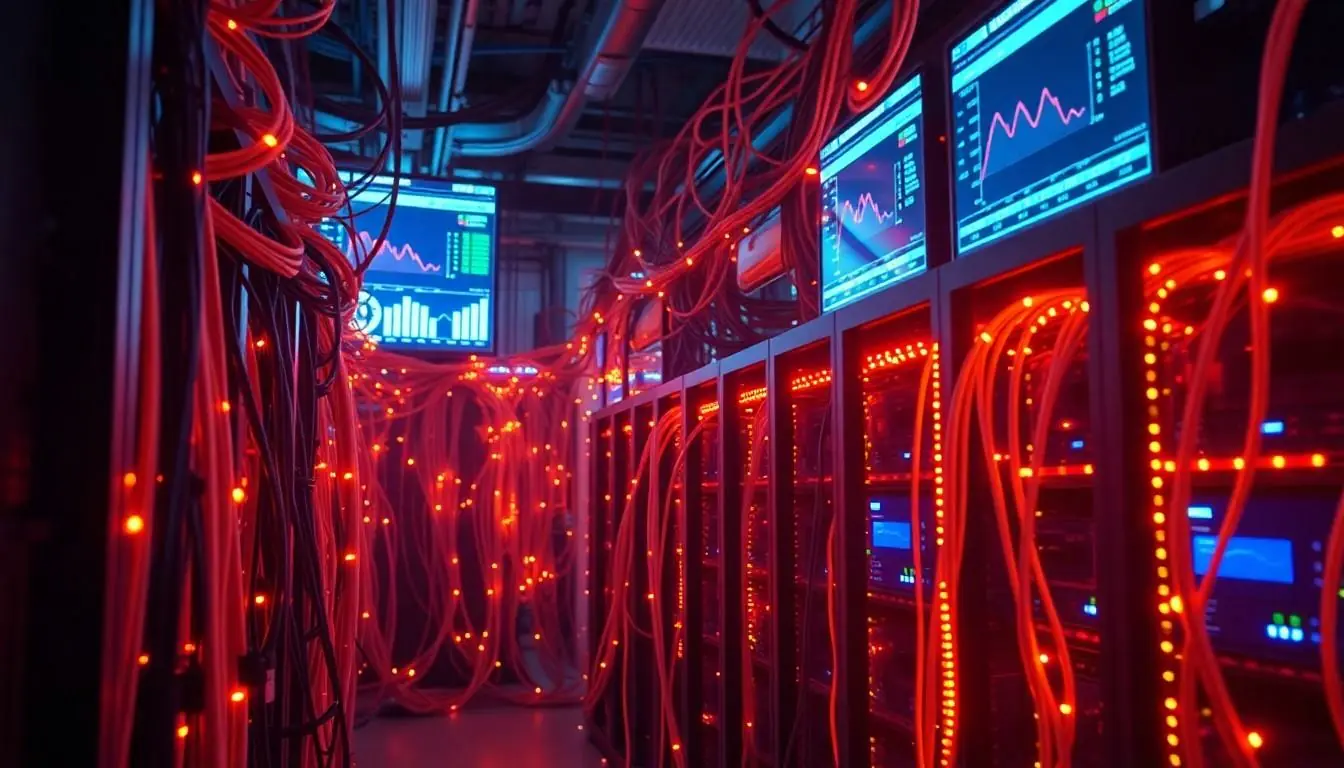Table of Contents
ToggleIn the digital age, few things are as frustrating as a tech meltdown, and when ChatGPT crashed, it felt like the internet’s version of a flat tire on a road trip. Users everywhere were left scratching their heads, wondering if their favorite AI buddy had taken an unexpected vacation. But what really happened behind the scenes?
From server overloads to unexpected bugs, the reasons for a crash can be as varied as the memes that flood social media. Dive into the chaos as we unravel the mystery of why ChatGPT decided to take a break. Spoiler alert: it’s not because it needed a nap! Join the journey to understand the quirks of AI and how they keep us on our toes, sometimes literally.
Overview of ChatGPT
ChatGPT operates as an advanced AI language model developed by OpenAI. This model utilizes deep learning techniques, particularly a variant of Transformer architecture, allowing it to process and generate human-like text. Trained on extensive datasets, it responds to queries, generates creative content, and assists users in various tasks.
Users commonly rely on ChatGPT for customer support, tutoring, content creation, and even programming help. Its versatility makes it an attractive tool for individuals and businesses alike, enhancing productivity and efficiency. Despite its benefits, the model encounters limitations, particularly during high-demand periods.
During spikes in usage, server overload can lead to performance issues or crashes. Such scenarios often frustrate users, disrupting their activities and necessitating system improvements. Developers continuously monitor performance metrics to optimize resource allocation and minimize downtime. Unexpected bugs may also arise during interactions, resulting in incomplete or inaccurate responses, further complicating user experience.
OpenAI actively seeks to address these challenges. Updates and patches regularly roll out to improve stability and performance. Transparency in communication has become crucial, especially during outages, as users expect timely updates on restoration efforts.
Understanding the intricacies of ChatGPT highlights both its capabilities and challenges. Awareness of potential disruptions, like server overloads and bugs, can help users navigate their interactions with this powerful AI tool effectively.
Factors Contributing to the Crash

Several factors contributed to the crash of ChatGPT, leading to user frustration during critical moments. Understanding these elements provides insight into the challenges facing this advanced AI model.
Server Overload
Server overload emerges as a primary reason for crashes. During peak usage times, the number of simultaneous requests exceeds the system’s capacity. Increased demand can strain resources, leading to delays or complete service interruptions. Users may experience slow response times or sudden disconnections, complicating their tasks. OpenAI continually works on enhancing infrastructure to mitigate overload issues. Cloud computing solutions are also being scaled to accommodate growing demand.
Technical Glitches
Technical glitches frequently disrupt performance as well. These glitches can stem from software bugs, conflicts in code, or unexpected interactions between system components. When a glitch occurs, it may lead to incorrect outputs or processing errors, creating confusion for users. OpenAI prioritizes regular maintenance and updates to address these vulnerabilities, aiming to improve system stability. Continuous monitoring helps to quickly identify and rectify issues, ensuring a smoother user experience.
User Surge
User surge plays a significant role in crashes as well. When spikes in user activity occur, such as during product launches or announcements, the system faces increased strain. A sudden influx of users can overwhelm servers and throttle performance. Avoiding these surges entirely is impractical due to ChatGPT’s popularity across various sectors. OpenAI anticipates demand increases by analyzing usage patterns and adjusting system capabilities accordingly. Enhanced communication during these times keeps users informed of potential disruptions.
Response from OpenAI
OpenAI responded swiftly to the outage of ChatGPT. They implemented several measures to rectify the situation, ensuring users could resume their tasks seamlessly.
Steps Taken to Address the Issue
OpenAI prioritized infrastructure upgrades to manage higher user loads effectively. These enhancements focused on increasing server capacity and optimizing software performance. Technical teams also investigated the specific bugs that caused the crash. Regular monitoring now helps identify potential bottlenecks before they escalate. Testing environments were expanded to simulate heavy demand, allowing for thorough assessments. These proactive steps demonstrate OpenAI’s commitment to reliability and user satisfaction.
Communication with Users
OpenAI maintained transparent communication during the crash. Users received timely updates through various channels, including email and social media. Acknowledging the frustration felt by many, the company provided insights into the nature of the problem. They emphasized their ongoing efforts to enhance system stability and performance. Feedback gathered from users also informed future improvements, reflecting OpenAI’s dedication to customer experience. Regular updates ensure users stay informed about changes and system enhancements.
Implications for Future Developments
Understanding the factors behind ChatGPT’s crash shapes its future enhancements. A focus on server overload prevention stands as paramount. OpenAI aims to expand server capacity to manage user surges effectively. Reducing technical glitches relies on continuous software improvements. Implementing rigorous testing protocols helps identify bugs before deployment.
User feedback influences ongoing enhancements significantly. OpenAI actively engages with users to gather insights, ensuring that their concerns guide development. Improved communication channels keep users informed about outages, enhancing trust in the platform. Transparency during downtime reassures users about OpenAI’s dedication to reliability.
Infrastructure upgrades promise to boost overall performance. Upgrading systems supports higher simultaneous requests, which is crucial during peak usage times. Regular monitoring helps detect potential issues early, allowing for quicker responses. Investing in these areas demonstrates OpenAI’s commitment to enhancing user experience.
Collaboration within development teams fosters innovation. Teams analyze past incidents to create proactive solutions, aiming to minimize disruptions. Leveraging data analytics further identifies trends in user behavior, allowing for tailored improvements. Prioritizing these implications ensures ChatGPT remains a reliable tool for various tasks, from customer support to content creation.
Emphasizing robotic capabilities leads to better preemptive strategies. Adapting to user needs ensures continued engagement with the platform. Increased efficiency not only mitigates crashes but also cultivates long-term user satisfaction. Innovations in AI infrastructure position OpenAI as a leader in advanced language processing solutions.
ChatGPT’s recent crash highlighted the challenges faced by advanced AI systems during high-demand periods. Users encountered frustration as server overloads and technical glitches disrupted their experience. OpenAI’s swift response to the situation demonstrates its commitment to improving reliability and performance.
By focusing on infrastructure upgrades and actively addressing user feedback, OpenAI aims to enhance ChatGPT’s capacity to handle increased traffic. Continuous improvements and transparent communication will help users navigate potential issues while appreciating the tool’s capabilities. As these advancements unfold, users can look forward to a more stable and efficient ChatGPT experience in the future.








